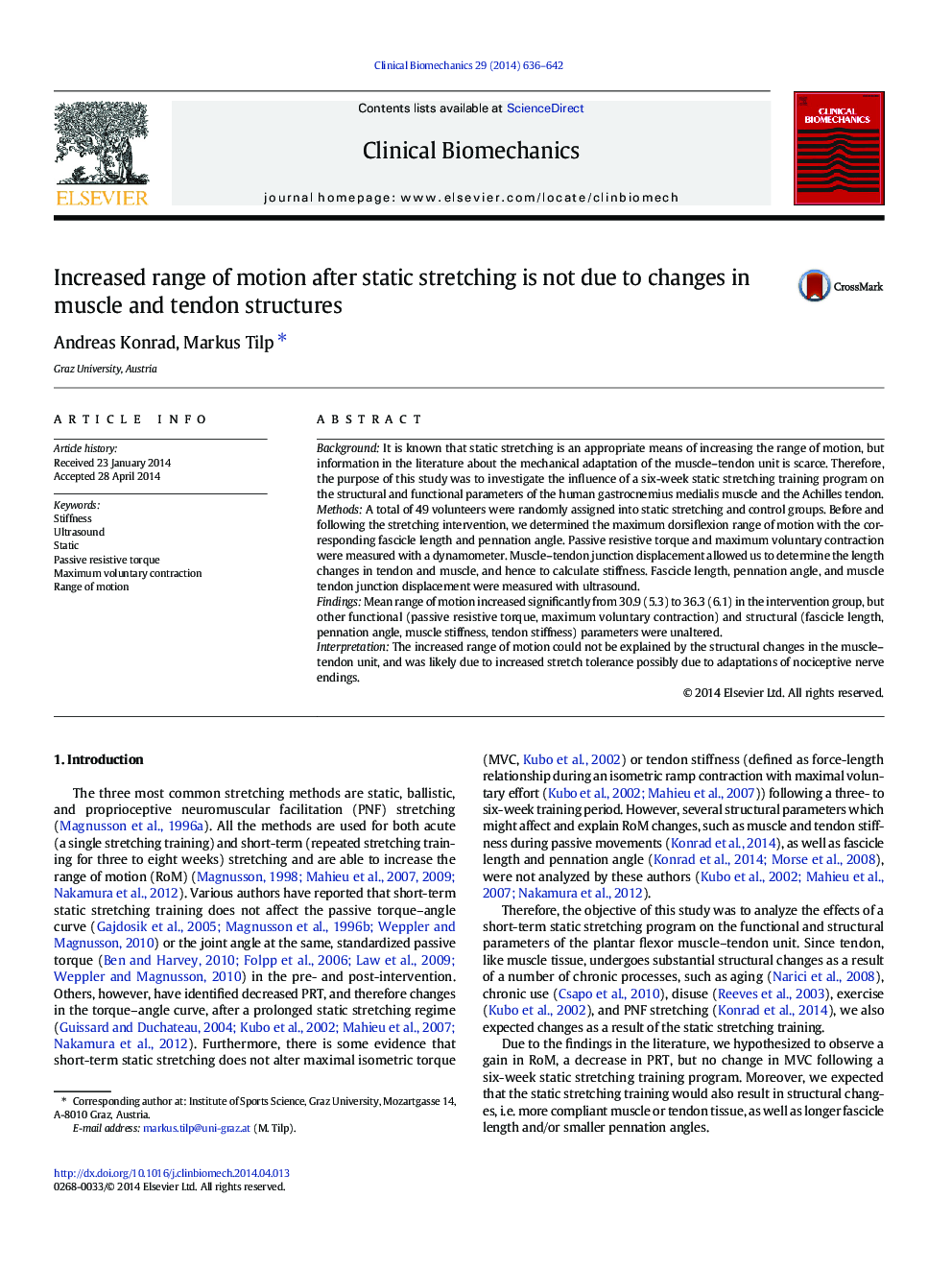| Article ID | Journal | Published Year | Pages | File Type |
|---|---|---|---|---|
| 4050432 | Clinical Biomechanics | 2014 | 7 Pages |
BackgroundIt is known that static stretching is an appropriate means of increasing the range of motion, but information in the literature about the mechanical adaptation of the muscle–tendon unit is scarce. Therefore, the purpose of this study was to investigate the influence of a six-week static stretching training program on the structural and functional parameters of the human gastrocnemius medialis muscle and the Achilles tendon.MethodsA total of 49 volunteers were randomly assigned into static stretching and control groups. Before and following the stretching intervention, we determined the maximum dorsiflexion range of motion with the corresponding fascicle length and pennation angle. Passive resistive torque and maximum voluntary contraction were measured with a dynamometer. Muscle–tendon junction displacement allowed us to determine the length changes in tendon and muscle, and hence to calculate stiffness. Fascicle length, pennation angle, and muscle tendon junction displacement were measured with ultrasound.FindingsMean range of motion increased significantly from 30.9 (5.3) to 36.3 (6.1) in the intervention group, but other functional (passive resistive torque, maximum voluntary contraction) and structural (fascicle length, pennation angle, muscle stiffness, tendon stiffness) parameters were unaltered.InterpretationThe increased range of motion could not be explained by the structural changes in the muscle–tendon unit, and was likely due to increased stretch tolerance possibly due to adaptations of nociceptive nerve endings.
